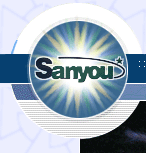| |
 | |  |
 |
| Brief
Introduction on International Anti-Counterfeiting Technologies |
| (From CIB---Counterfeit Intelligence Bureau) |
1、Of the optical anti-counterfeiting technologies, holograms are very
much in the forefront as a means of product protection. Holography has become
a fertile area for new developments which include the "Colourgrams",
"Stereograms", "Cryptograms", "computer hologram",
etc.. Holograms have been widely used for many years by credit and bank cards,
idenfication cards, and various products. Their very novelty and strong visual
appeal coupled with the difficulty and high investment necessary to replicate
them are undoubtedly key factors in the success of security holograms. Other factors
contributing to their prominence as an anti-counterfeiting security device include
the ease of application of holograms to product and packaging, the impossibility
of removing them, their relatively low cost , the ease with which they can be
verified, mass production, nice function-price ratio, easily combine with other
techniques to form comprehensive anti-counterfeiting products.
2、Other optical
anti-counterfeiting technologies include optically variable thin films, use of
retro reflective material and scrambled images. Optically variable thin films
have the property that when tilted they undergo a change of colour. Applications
of this technology include the Canadian $50 banknote.
3、Scrambled image printing
involves the use of unique electronically programmed camera to scramble, distort
and overlap images so that only special decoder can decode them once they are
printed.
4、In the biotechnological field, it has been possible to develop
a means by which specific monoclonal antibodies are be able to "recognise"
specific antigens or marker chemicals. The marker chemicals are added in very
low concentrations to products such as pharmaceuticals or liquor. The markers
can only be detected by using a test kit containing the specific antibodies. This
system has the advantage that the anti-counterfeiting technology is part of the
product itself which is usually edible. Furthermore it is not possible for anyone
else to break the codes because the concentrations are too low to be detected
by conventional methods. The expensive detecting equipments limit its applications.
5、In what can be broadly termed the chemical field, the anti-counterfeiting
technologies include thermochromic (or heat reactive) inks. These typically are
applied on product labels and packaging and change colour when heated. Often heat
from a hand may be all that is necessary to cause a colour change and with some
inks a series of colour changes will take place as the temperature rises. Similarly
when the heat source is removed the colour reverts to the original. The effect
is reversible an infinite number of times. |
6、Allied in effect to the thermochromics are photochromic
or light reactive compounds. These can also be applied to product label or packaging
and when exposed to ultra violet light change colour typically to red blue or
yellow. When exposed again to white light the colour reverts to the original.
Once again the effect is reversible as often required. Usually they have different
life periods due to decaying.
7、Inks have also been developed that are invisible
to the human eye but which can be read by bar code scanners. These have been used
in the fragrance and pharmaceutical industries to authenticate products. Other
reactive inks change colour when brought into contact with substances like ink
from a felt tipped pen.
8、Another type of chemical anti-counterfeiting device
can be found in the microtaggant which is virtually indestructible and was originally
developed to help forensic scientists to trace explosives form residues.
9、The electronic anti-counterfeiting technologies encompass a range of different
options. Magnetic stripes are able to store a considerable amount of information
in coded form. The information is stored in magnetisable particles and read by
a contact scanner. The most common application of this security technology is
of course to bank and credit cards.
10、Visa International introduced a new
Card Verification Value (CVV) device on its cards and claims that this has reduced
fraudulent transactions in the Asia Pacific region by one third. CVV is a secret
code placed in the magnetic stripe of credit cards which enables counterfeit cards
to be detected and rejected.
11、Smart cards incorporate another electronic
technology that is rapidly developing and receiving growing acceptance as an anti-counterfeiting
device. A smart card is a plastic card which incorporates a computer chip which
provides the means to write into or read information from the card with various
degrees of security. Whilst some cards contain long life batteries to provide
power for memory, others contain contacts for transferring power and data.
12、Software producers have been beset with the problem that the legitimate use
of their products necessarily involves programmers being copied. They have however
developed a variety of options to prevent illegal copying including the Software
Sendnel. This system is attached to the serial port of a computer or a parallel
printer and "unlocks" software products designed to function only with
the key. Other systems under development involve tying the user to computer operating
system using complex numbered codes. Without the number the software system will
not work. In addition the software will search the computer for matched access
codes before becoming operable.
13、Another electronic anti-counterfeiting
device aimed at combating fraudulent signatures is DigiScan. This is a computerized
signature verification system which is designed to scan signatures on cheques
and other valuable documents and ascertain within seconds whether the signature
is genuine. The system works by encoding up to six specimen signatures and through
the use of a complex mathematical model which allow for variations, compares these
to the signature being scanned.
14、Today even nuclear or neural network technology
are being applied to prevent counterfeiting. The accelerated particles (atoms,
ions,---) from the accelerator penetrate into the package materials or labels
and can be detected in quality and quantity.
Among the above 14 techniques,
7 of them (No.1, 5, 6, 7, 9, 13,14) have been successfully and widely used by
SLIC in anti-counterfeiting label products. The rest ones have not been used due
to some problems on price, environment, detection, etc.. | |
|  |
|



